Mabon is a relatively new festival in the Celtic seasonal wheel, celebrated around the Autumnal Equinox. In the Northern Hemisphere this was yesterday, September 23rd. The Equinox is a time of balance when hours of darkness and light are of equal length. Mabon often symbolised by an apple and the radiant warm colours of autumn, appears to have started in the 1970s, but it is rooted in ancient Pagan times. It heralds a time of equilibrium and gratitude for a second harvest. The Christian Harvest Festival is traditionally celebrated on the Sunday closest to the harvest moon, that is the full moon that occurs nearest to the Autumn Equinox. This year the harvest moon will fall on 29th September which prompts Sunday October 1st as a Harvest celebration of Thanksgiving.
For the foraging cook it is a time for preservation. Elderberries are known to be packed with vitamins and a sweet syrup may ward off colds. Pontack, is a less well known condiment also made with elderberries. It personifies slow cooking not least because older recipes suggest that it improves with age. Some cookery books including, The Forager’s Kitchen Handbook suggest waiting for seven years before cooking with Pontack. The dark purple, almost black berries, are bitter unlike their sweeter hedgerow pal, the bramble. Elderberry umbels hang heavily in early autumn, in stark contrast to the lacy, blousy cream floral umbrella of early summer. Pick all of the flowers for cordial or syrup in June and there will be no elderberries in September. Nature is generous but over indulgence ensures that the forager doesn’t get something.
A slow Sunday at the height of the gathering-in season, offers an opportunity to preserve our wild larder. For the Christian, Sunday is a mini Easter, a celebration of the Easter event and a time to remember that death does not triumph. Meeting together in church recognises gratitude for life. Other religions also celebrate sacred days: Muslims gather together on a Friday and Jews on a Saturday. In the Kirk, Sunday school children still sing ‘This is the day that the Lord has made.’ (Ps 118:24) historically, on what was a day of rest – not from hard work, but to reflect about who God is. Sundays don’t technically count among the forty days of Lent (there are forty six days between Ash Wednesday and Easter Sunday). For the foraging cook, Sunday offers a day for reflection whilst pursuing the primitive pleasurable act of gathering wild food
.
Churchyards are a good place to start. Some of my elderberries are often picked in overgrown graveyards. It’s an opportunity to step inside a church too, if a key is available. When a congregation has dispersed an empty church provides solace, a place to slow down and contemplate
.
Disraeli was the first non Christian Prime Minister. He governed in an era when on a Sunday pews were full to the gunnels. Sunday was a day for worship. Rishi Sunak, a Hindu, governs Britain at a time when fewer people have a faith. The Sunday Park run group is overtaking those who hasten to the toll of the church bell. Peter, described by Jesus as the rock upon which Christ built his church (Matt 16: 17-19) can no longer be taken literally; churches have been on the edge of a cliff for a while. Lockdown has pushed some buildings into closure just as Coronavirus has sent shoppers racing to online purchasing; heralding the demise of the department store in its stampede. Some Christians may have left the building, but faith is no more about bricks and mortar than it is about Sunday lunch. However, a slow September Sunday provides an opportunity to share seasonal and foraged food. Add a splash of Elderberry Ketchup or Pontack to a warming casserole and you could work in some late September wild mushrooms, too.
A pudding date with Apple and Bramble Crumble is made for a Sunday lunch in September. It can only be perfected by the addition of a few simmered and sweetened stalks of wild angelica
.
.
Sharing seasonal food around a table is heart warming and for the Christian, brings Christ into the home.
Pontack an adaptation of a recipe from The Forager’s Kitchen Handbook. Please acknowledge copyright to Fiona Bird
Makes 250ml
250g elderberries
250 ml apple cider vinegar
1/2 Star anise
3 cloves
2 black peppercorns
Small Mace shaving
1cm fresh ginger, bruised
1/2 small shallot, thinly sliced
20g soft brown sugar - to taste
Remove the elderberries from their stalks. A fork is useful. Rinse well.
Pop the rinsed elderberries and apple vinegar in a casserole dish. Cover and bake in a slow oven (100C) until soft or an Aga overnight.
Strain the liquid into a jug and push the remaining elderberry juice through the sieve using a potato masher.
Put the rather evil coloure liquid into a pan with the spices and shallot. Cover and simmer over a very low heat for 25 minutes. Strain and return to the pan. Add sugar (to taste). Cook over a low heat to dissolve the sugar and then boil vigorously for 2-3 minutes until syrupy.
Cool and bottle. Store in a dark place to mature - for at least seven years if you can.

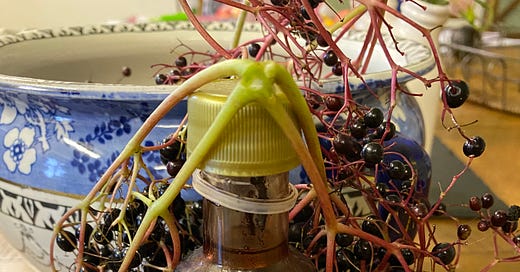



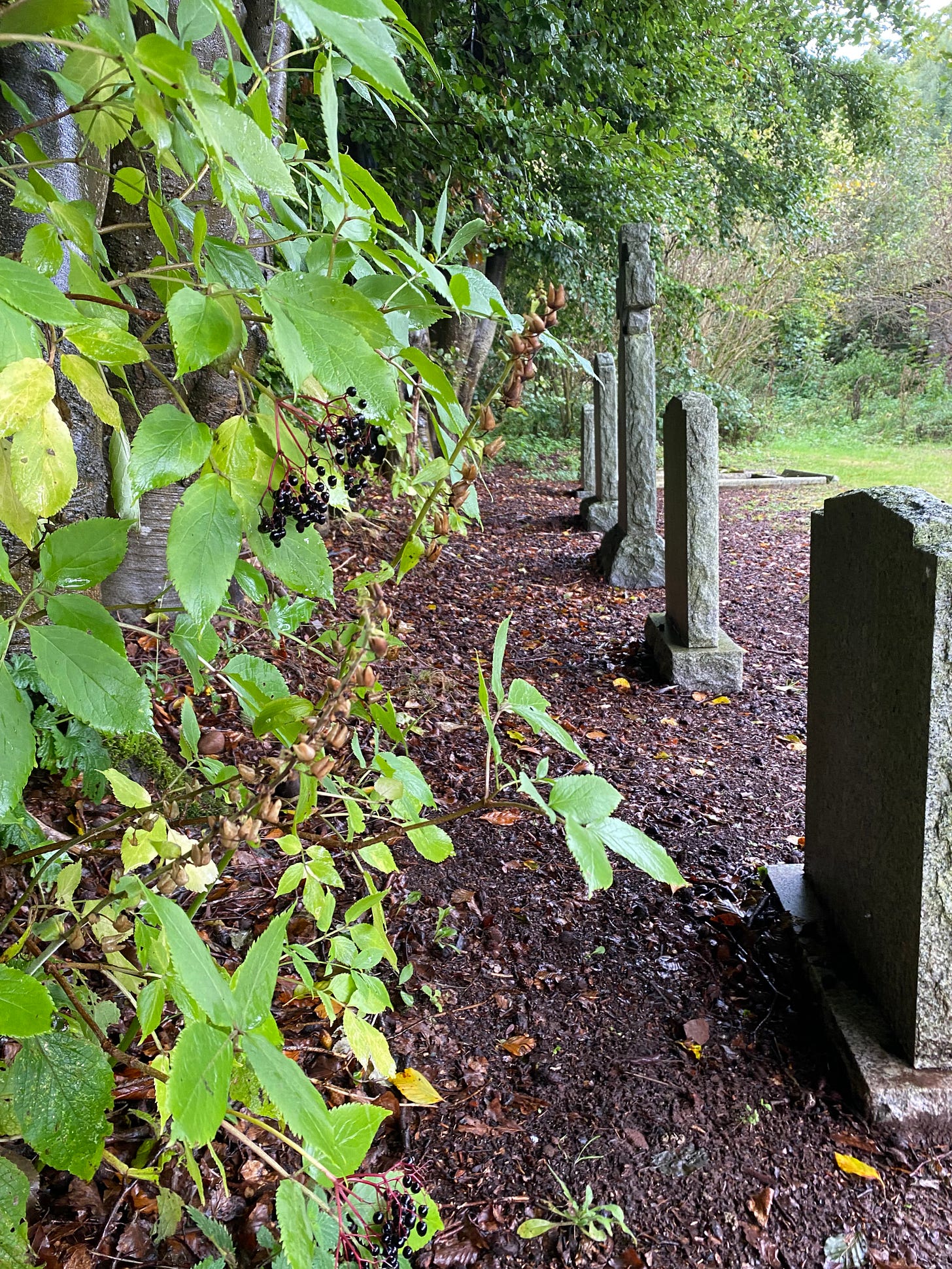
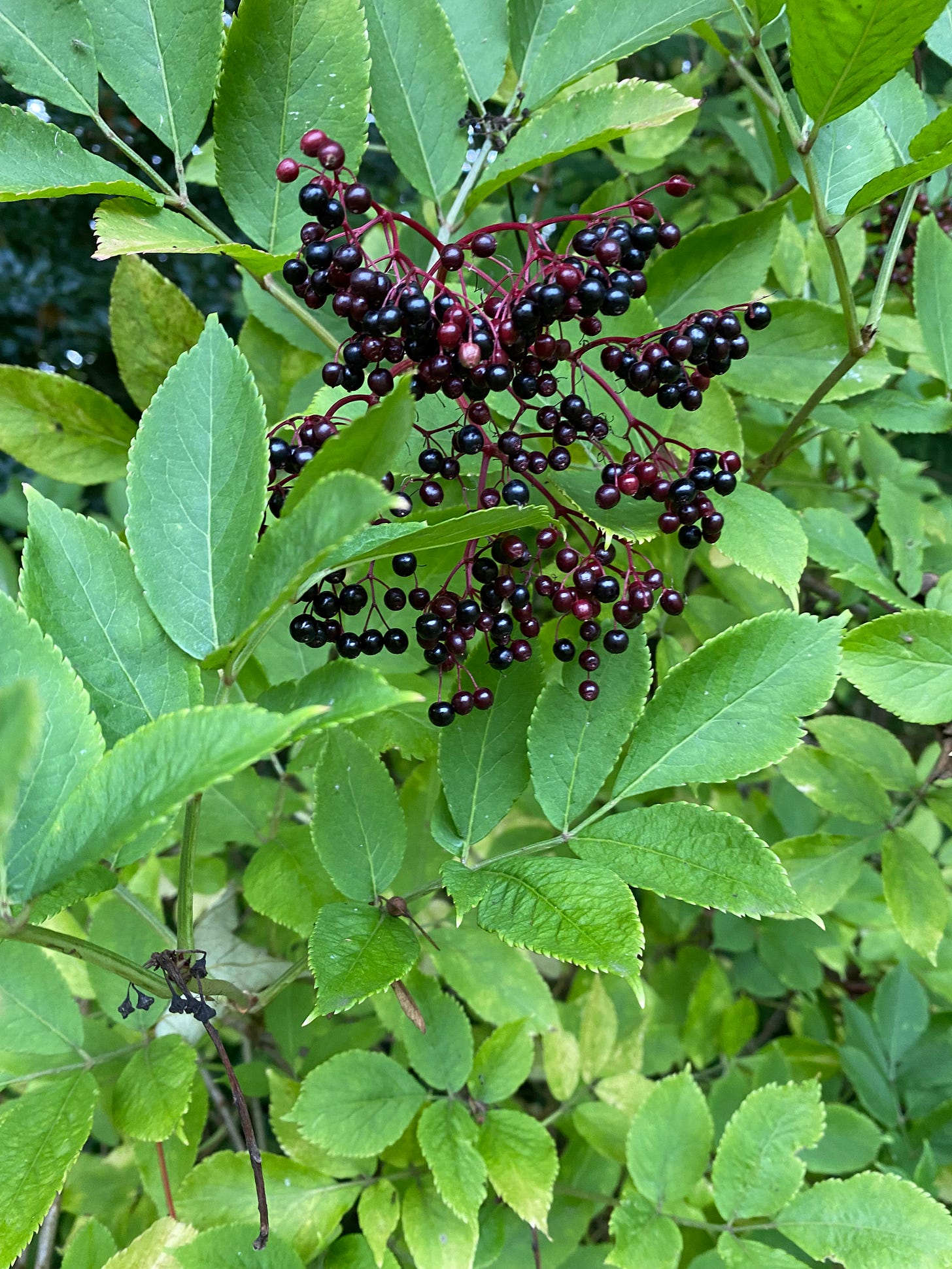
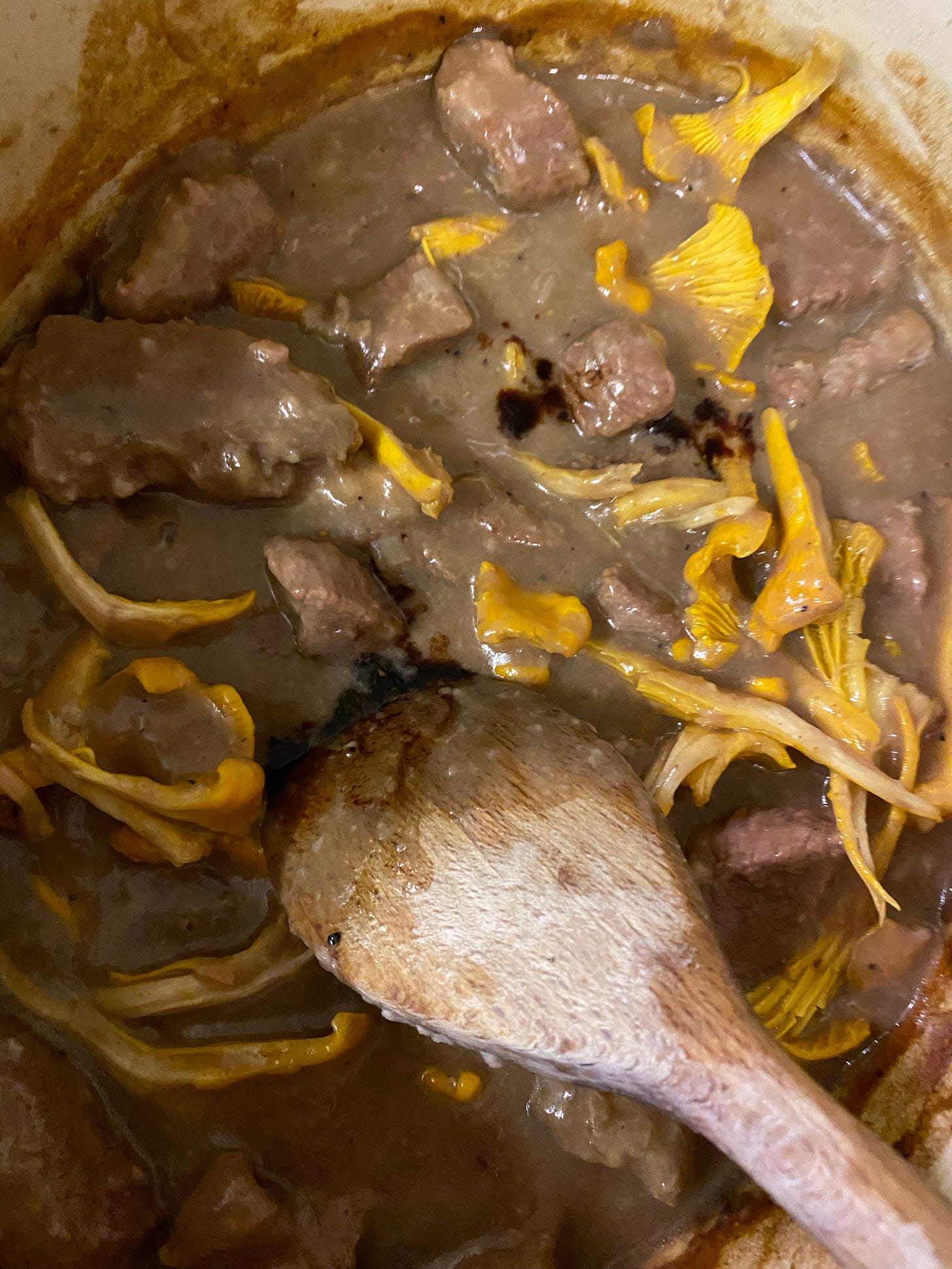
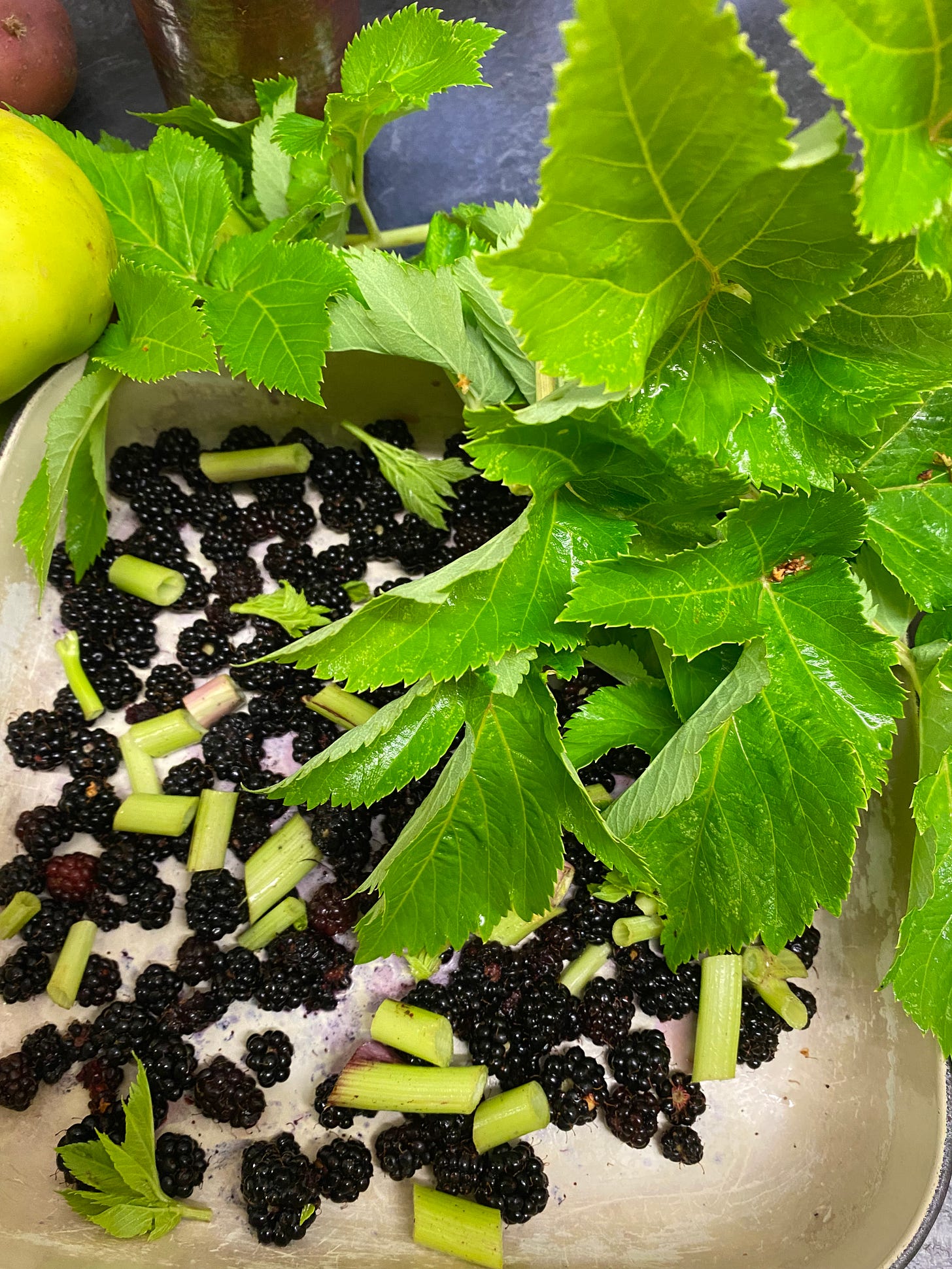
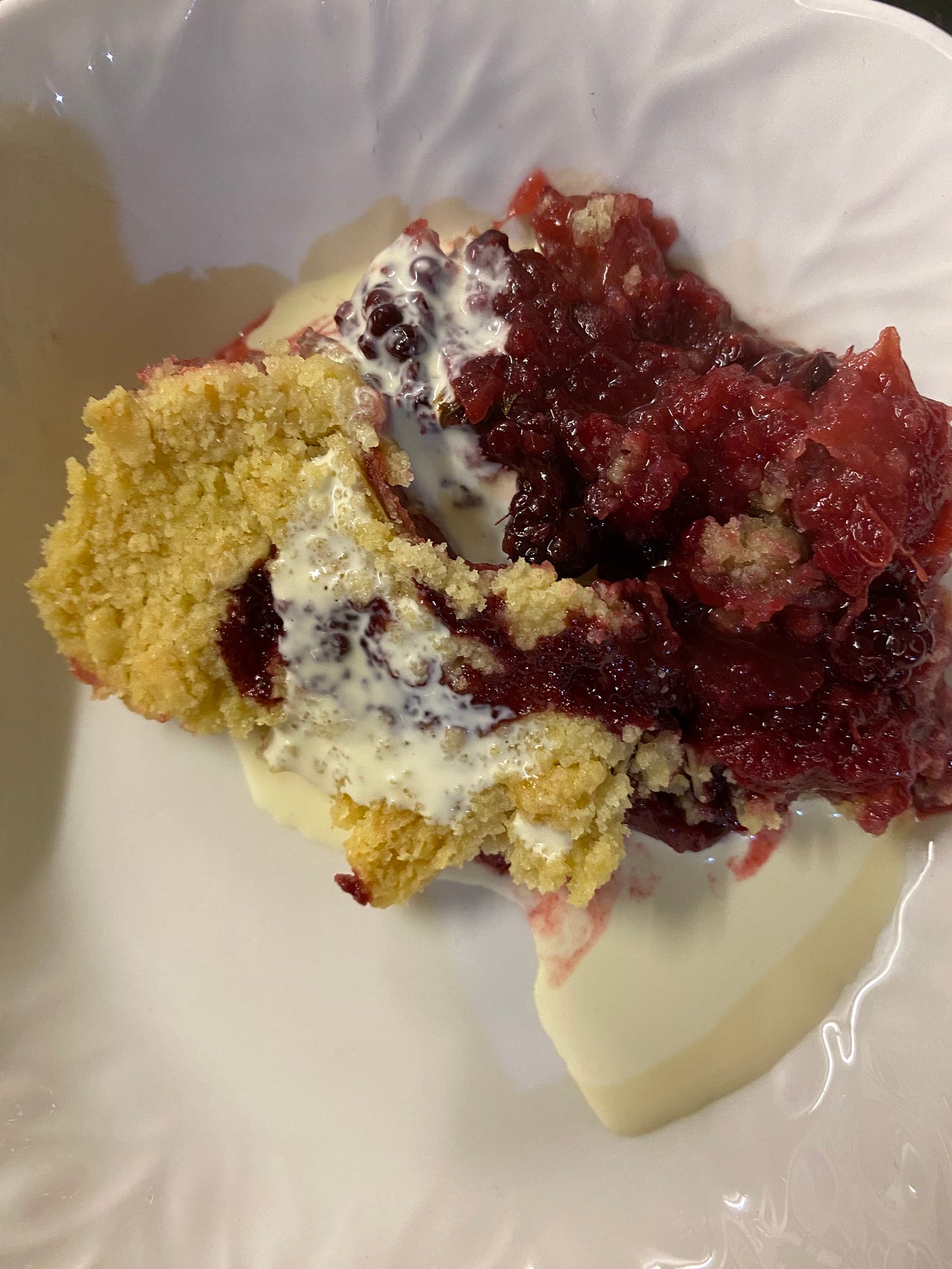
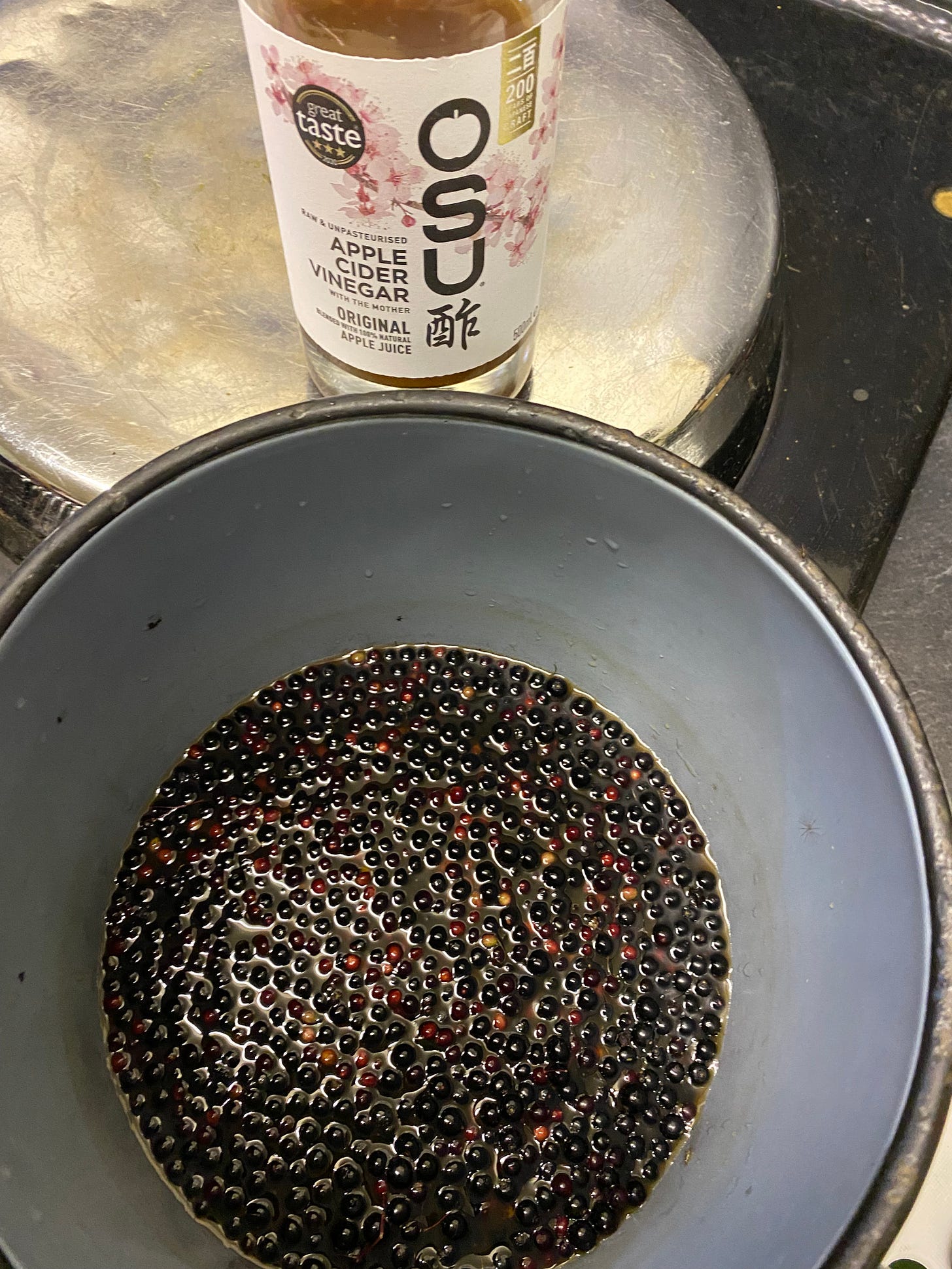
Don’t think I’d manage the 7 year wait!
Gorgeous pics, Fiona!